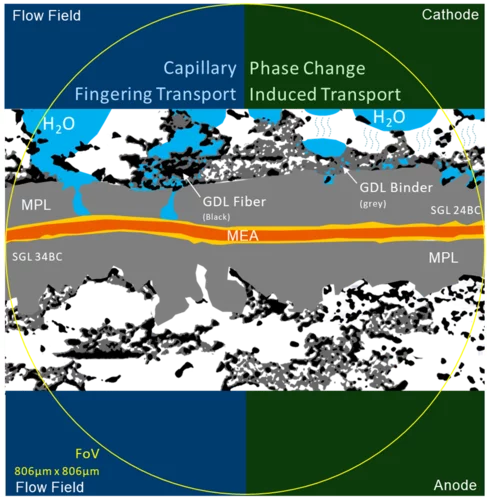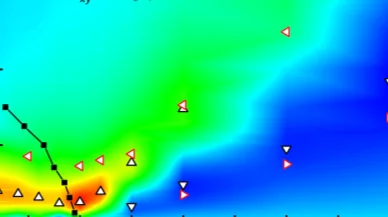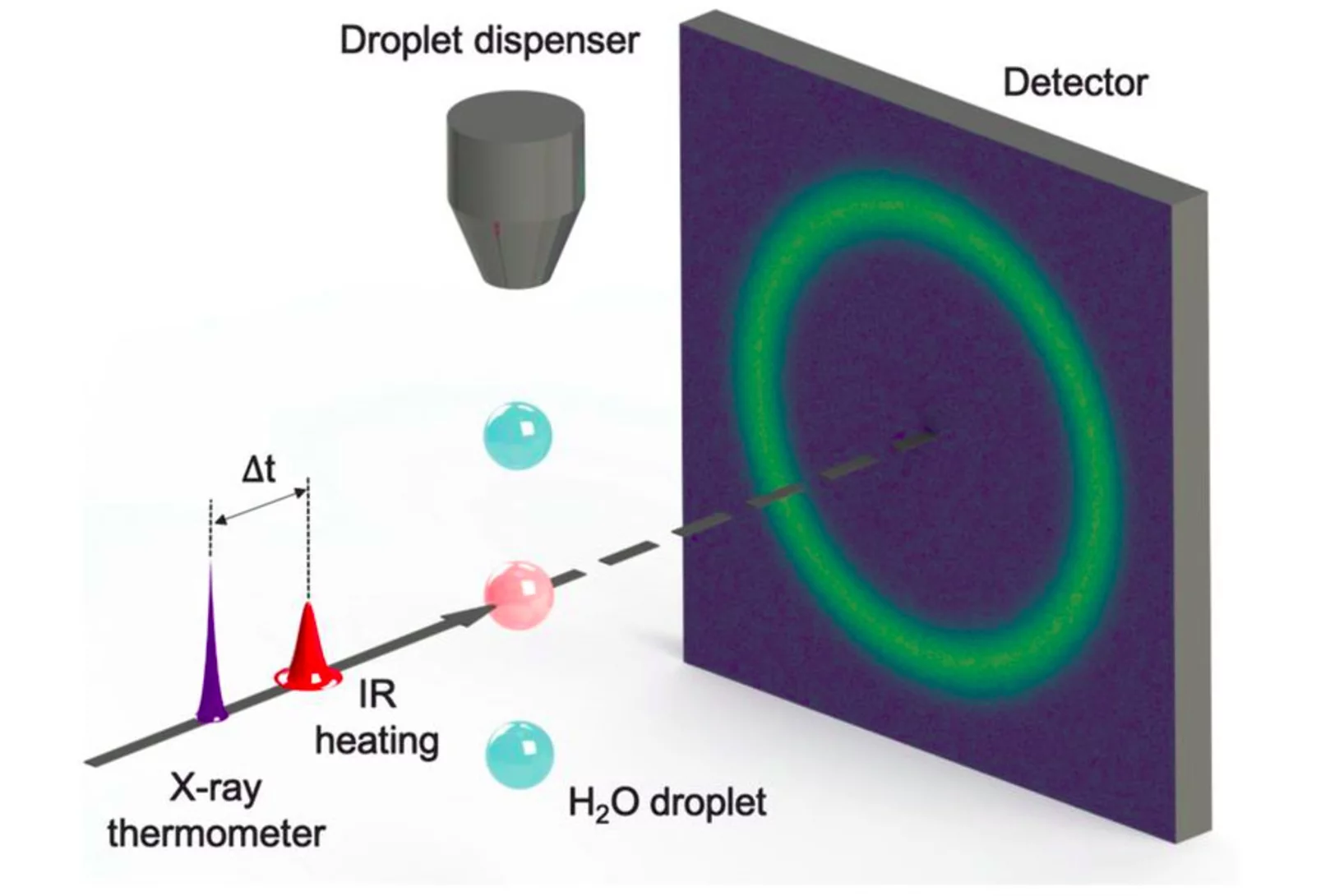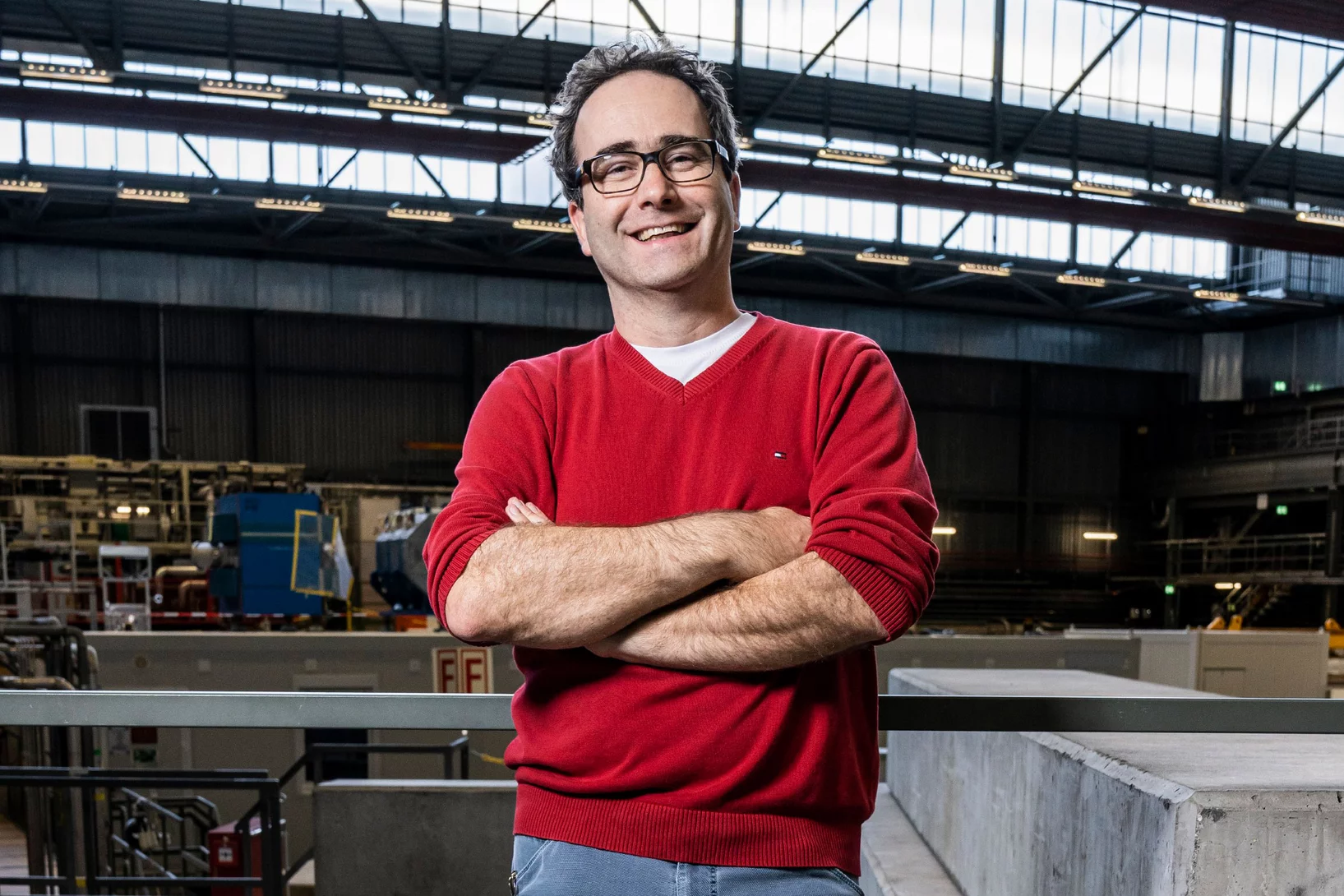Am PSI widmen sich mehrere Projekte wichtigen Forschungsfragen rund um das Coronavirus Sars-CoV-2 und den daraus resultierenden Erkrankungen. Wir informieren über Aktivitäten und Vorhaben, zum Beispiel zu Untersuchungen von Lungengewebe, zur Produktion von Proteinen und Antikörpern oder über Ideen für neue Forschung zu Covid-19.
Nützliche Links
Grüne Treibstoffe für den Flugverkehr
In einer neuen Initiative wollen PSI und Empa gemeinsam einen Prozess entwickeln, um Kerosin aus erneuerbaren Ressourcen herzustellen.
The Swiss Battery Days 2020/2021
A world without batteries? Unimaginable! They transform our electronic devices into wireless and portable objects.
Conduction control in nanoparticles
Light induced propagation strain pulse, converting nanoparticles of Ti3O5 from semiconducting to metallic phase.
Infografik «Dimensionen am PSI»
Von kleinsten Teilchen bis zu Weltraummissionen: die Spannweite der Dimensionen, die am PSI zu finden sind, lädt zu einer Reise durch die Grössenordnungen ein.
Strong Superexchange in a d^(9−δ) Nickelate Revealed by Resonant Inelastic X-Ray Scattering
The discovery of superconductivity in a d9−δ nickelate has inspired disparate theoretical perspectives regarding the essential physics of this class of materials. A key issue is the magnitude of the magnetic superexchange, which relates to whether cuprate-like high-temperature nickelate superconductivity could be realized. We address this question using Ni L-edge and O K-edge spectroscopy of the reduced d9−1/3 trilayer nickelates R4Ni3O8 (where R = La, Pr) and associated theoretical modeling.
Temperature Dependent Water Transport Mechanism
Subsecond and submicron operando X-ray tomographic microscopy (XTM) was applied to reveal the water dynamics inside the gas diffusion layer (GDL) of polymer electrolyte fuel cells (PEFC). Utilizing the instrumental advancements in operando XTM of PEFCs the contribution of capillary-fingering and phase-change-induced flow on water transport in GDLs was quantified, for the first time during fuel cell startup at different operation temperatures.
Sustainable Synthesis of Bimetallic Single Atom Gold-Based Catalysts with Enhanced Durability in Acetylene Hydrochlorination
Platinum chloride in aqueous solution promotes the dispersion of large gold nanoparticles (>70 nm) on carbon carriers into single atoms, forming bimetallic single-atom catalysts with improved resistance against sintering at temperatures up to 800 K and under the harsh reductive reaction conditions of acetylene hydrochlorination, leading to improved lifetime in this reaction. To rationalize these observations, this study, led by ETH Zurich, utilized X-ray adsorption spectroscopy conducted at the SuperXAS beamline of the SLS to provide insights into the degree of gold dispersion and the structure of the isolated metal sites in the bimetallic catalysts.
SWEET Program, Research challenge 4: Sustainability at the heart of a resilient Swiss energy system
The results have been announced of the first call for proposals in the new energy research programme SWEET (Swiss Energy Research for the Energy Transition). An international panel of experts has awarded the contract to four consortia. The host institutions of these research consortia are ETHZ, EPFL, the University of Geneva and the PSI. Over the next six to eight years, they will work on their research tasks in trans- and interdisciplinary projects.
Die Schweizer Forschungsinfrastruktur für Teilchenphysik CHRISP
Forschende suchen nach Abweichungen im gängigen Standardmodell der Physik und wollen herausfinden, wie unser Universum aufgebaut ist.
Decomposing Magnetic Dark-Field Contrast in Spin Analyzed Talbot-Lau Interferometry: A Stern-Gerlach Experiment without Spatial Beam Splitting
We have recently shown how a polarized beam in Talbot-Lau interferometric imaging can be used to analyze strong magnetic fields through the spin dependent differential phase effect at field gradients. While in that case an adiabatic spin coupling with the sample field is required, here we investigate a nonadiabatic coupling causing a spatial splitting of the neutron spin states with respect to the external magnetic field. This subsequently leads to no phase contrast signal but a loss of interferometer visibility referred to as dark-field contrast.
Unconventional Transverse Transport above and below the Magnetic Transition Temperature in Weyl Semimetal EuCd2As2
As exemplified by the growing interest in the quantum anomalous Hall effect, the research on topology as an organizing principle of quantum matter is greatly enriched from the interplay with magnetism. In this vein, we present a combined electrical and thermoelectrical transport study on the magnetic Weyl semimetal EuCd2As2. Unconventional contribution to the anomalous Hall and anomalous Nernst effects were observed both above and below the magnetic transition temperature of EuCd2As2, indicating the existence of significant Berry curvature.
Structural involvement in the melting of the charge density wave in 1T-TiSe2
The authors find using resonant and non-resonant x-ray diffraction on an x-ray free electron laser that the structural distortion and the underlying electronic structure of the charge density wave in TiSe2 show different energetics at ultrafast timescales. This indicates that the lattice distortion stabilizes the charge density wave.
Ultrafast calorimetry of deeply supercooled water
FEL-based ultrafast calorimetry measurements show enhancement and maximum in the isobaric specific-heat.
Clever chicanery delivers ultra-short hard X-ray pulse
A chicane slows down race cars on a track, causing them to bunch together. Using the same technique for electrons creates ultra-short X-rays that pack a punch.
Park Innovaare Innovationscampus: Vorführgebäude aufgebaut
Die Bauarbeiten zum Innovationscampus des Park Innovaare, welche im November 2019 begonnen hatten, schreiten sehr gut voran. Mittlerweile ist der Baufortschritt gut sichtbar. Der Innovationscampus besteht aus zwei Hauptgebäuden (A1 und B1), in welchen ganze Etagen, aber auch einzelne Büros und Laborflächen vermietet werden. Verbunden werden A1 und B1 durch einen Verbindungsgang im 1.Obergeschoss.
Peering into proteins for better drug discovery
The CCR5 receptor (yellow) spans the cell membrane to relay messages from chemokines into the cell’s interior. But until now researchers did not know for sure how that looked when the receptor was activated.
Congratulations to Julian Wennmacher!
On February 10th, 2021, Julian Wennmacher defended his PhD entitled "Developing electron crystallography to elucidate the location of functional sites in zeolites" at ETH Zurich. Congratulations!
Infografik «Das PSI-Areal»
5232 ist nicht von ungefähr der Titel des PSI-Magazins: Es ist die einmalige Postleitzahl des Instituts. Auf der Areal-Fläche, so gross wie 48 Fussballfelder, gibt es noch weitere Zahlen zu entdecken, vom täglichen Kaffeekonsum bis zu Hunderttausenden Metern Glasfaserkabeln.
New group member
Robert Kälin officially joins the Quantum Technologies group as technician of the Cristallina endstation.
«Letztendlich wollen wir verstehen, wie Krankheiten in einzelnen Zellen entstehen»
Moderne Bild- und Sequenziertechniken, kombiniert mit maschinellem Lernen, bieten Forschenden unzählige Möglichkeiten, so genau wie nie zuvor in Zellen zu blicken. G.V. Shivashankar, Laborleiter am PSI, beschreibt, wie sich die Daten kombinieren lassen, um Antworten auf drängende Fragen zu finden.
Infografik «Menschen am PSI»
Rund 2100 Angestellte hat das PSI, darunter 800 Forschende. Zudem halten sich regelmässig Gastforschende und Besucherinnen und Besucher auf dem Gelände auf. Unsere Infografik gibt eine Übersicht über Menschen am PSI.
Christian Bauer interviewed on Electric Mobility at the Kassensturz program by SRF
SRF interviewed Christian Bauer, a scientist at PSI's Laboratory for Energy Systems Analysis who specialises in life cycle and sustainability analyses, on Electric Mobility at the program Kassensturz
Welcome Florent Dubray
On Feb 1st, a new postdoc, Florent Dubray will start in our group. He finished his PhD on the synthesis, characterization and catalytic applications of metal containing zeolites at the ENSI in Caen.
He will work on the (new) SYNFUEL project (a PSI initiative to make sustainable jet fuel) converting methanol into jet fuel over modified zeolite catalysts.
Webinar: Projekt SLS 2.0
Am 9. Februar findet von 10:00 – 12:00 ein Webinar zum Projekt SLS 2.0 statt, zu welchem wir interessierte nationale und internationale Unternehmen einladen!
Die Veranstaltung wird gemeinsam vom PSI (Paul Scherrer Institut) und dem Schweizer ILO (Industrie-Verbindungsbüro für Forschungseinrichtungen) organisiert. Im Rahmen dieses Webinars erteilen wir Informationen zu den PSI-Beschaffungsregeln, eine Einführung in das Projekt SLS 2.0 und einen Überblick über die kommenden kommerziellen Ausschreibungen der SLS 2.0.
TCS Switzerland Passenger Cars platform extended with Life Cycle Carbon footprint from PSI-TA
TCS Switzerland has extended its passenger car search and comparison platform by adding the life cycle carbon footprint quantified by PSI-TA.
Clocking the movement of electrons inside an atom
Scientists pioneer an approach called self-referenced streaking, clocking Auger electrons with sub-femtosecond resolution. The breakthrough will unlock the broader potential for attosecond time resolution at X-ray free-electron lasers.
Novel X-band transverse deflection structure with variable polarization
The growing request for sophisticated electron beam manipulation techniques for the optimization of Free Electron Lasers (FELs) or novel acceleration techniques requires enhanced beam control capabilities and characterization. One of the most important challenge is the development of new diagnostic techniques able to characterize the longitudinal phase space of the beam, including spatial correlation terms, with a resolution in the range of a few tens of fs to sub-fs.
XPS allows in situ investigation of the solid-gas interface during a catalytic reaction
Platinum isolated atoms and clusters supported on molybdenum carbide have been characterized in situ by means of photoelectron spectroscopy. The presence of both species is essential to favor the stability, so that the catalysts displays high metal-normalized turnover number of 4,300,000 moles of hydrogen per mole of platinum during the water gas shift reaction.
Size of helium nucleus measured more precisely than ever before
In experiments at the Paul Scherrer Institute PSI, an international research collaboration has measured the radius of the atomic nucleus of helium five times more precisely than ever before. The researchers are publishing their results today in the journal Nature.
Grösse des Heliumkerns genauer gemessen als je zuvor
In Experimenten am Paul Scherrer Institut PSI hat eine internationale Forschungszusammenarbeit den Radius des Atomkerns von Helium fünfmal präziser gemessen als jemals zuvor. Mithilfe des neuen Werts lassen sich fundamentale physikalische Theorien testen.






























